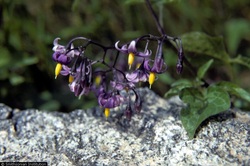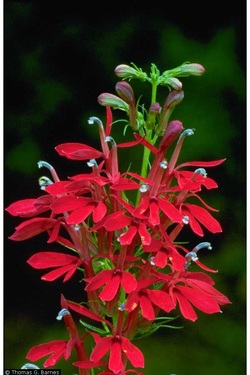Today,
medications are incredibly accessible.
Have a headache? We have a pill for that. Does your stomach hurt? Take a Tums.
Do you have really bad diarrhea?
Yup, we can fix that too.
Obviously, none of these modern medicines were available in the Adirondacks
during the time of John Brown or Herreshoff.
In class we discussed this lack of medical care in the 18th and 19th centuries, and
I began to wonder if there were any medicinal herbs present in the Adirondacks. What I found was quite an extensive list, and
I’m going to share a few favorites with you!
Heal-all
(Prunella vulgaris)
These stocky purple flowers grow best in warm
seasons. This herb was used to get rid of
styes, cure diarrhea, and reduce internal bleeding. Its uses extend to modern medicine, with scientists
studying it as a potential treatment for herpes, AIDS, cancer, and diabetes!
HEAL-ALL (Picture from www.vitalitymagazine.com)
Jewelweed (Impatiens capensis)
Not only do these flowers grow in the Adirondacks,
but they are at Hamilton in the Glen!
They are known to effectively treat poison ivy rash, and other
traditional uses include the treatment of ringworm, insect stings, eczema, and
cuts. Additional fun fact: these flowers
have spring loaded seeds that explode out when touched!
JEWELWEED (Thomas G. Barnes @ USDA-NRCS PLANTS
Database
Twinflower (Linnaea
borealis L.)Ladies, this herb is for you! The Algonquins would use this flower in a tonic to treat painful menstrual cramps and pregnancy.
TWINFLOWER (Picture from: Al Schneider @ USDA-NRCS PLANTS Database
http://edibleandmedicinalplants.weebly.com/medicinal.html)
Bitter Nightshade (Solanum dulcamara L.)
This thicket growing plant was used as a narcotic, sweat inducer, and a treatment to warts and tumors. Modern medicine has found that the herb actually has cancer fighting properties. Additionally, this herb is used as a starting point for steroids.
BITTER NIGHTSHADE (Picture from R.A. Howard @ USDA-NRCS PLANTS Database
http://edibleandmedicinalplants.weebly.com/medicinal.html)
Cardinal Flower (Lobelia cardinalis L.)
Typically found in streambanks or wet meadows, the Pawnee used this herb when making “love potions.” Iroquois used this flower to treat stomachaches, fever sores, and cramps. When times were desperate and tobacco was unavailable, this herb was used as a weaker substitute.
CARDINAL FLOWER (Picture from: Thomas G. Barnes @ USDA-NRCS PLANTS Database http://edibleandmedicinalplants.weebly.com/medicinal.html)
There are
many more herbs that can be found at this website. We place a lot of faith in modern medicine,
but writing this blog post reminded me that there are effective cures to
illness and disease in nature - and many can be found in our own backyard.
Works Cited
Rathbone, Ellen. "Adirondack Herbs: Heal-all" Adirondack Almanack. Accessed: 22 Sept 2015. http://www.adirondackalmanack.com/2010/09/adirondack-herbs-heal-all.html
Ruan, Michelle. Edible and Medicinal Wetland Plants of the Adirondacks. SUNY Plattsburgh, 2012. Web. 22 Sept 2015
Anderson, Kat. Cardinal Flower. USDA, 2000. Web. 22 Sept 2015.





I love this post! It's so interesting to learn about these different plants and the history involved with them. Today we rely so heavily on various drugs prescribed by doctors, we don't even consider what natural remedies could be surrounding us. Also that's really cool that the Jewelweed plant is in the Glen, I kind of want to go find it now. Thanks for sharing!
ReplyDeleteThe Shakers were also famous for their herbal remedies and they had a large population around this region. I think we might have a big collection on the Shakers in Burke Library and Professor Gapp in the biology department does a lot of work with historical herbal medicine. So interesting!
ReplyDeleteThis comment has been removed by the author.
ReplyDeleteThis comment has been removed by the author.
ReplyDelete